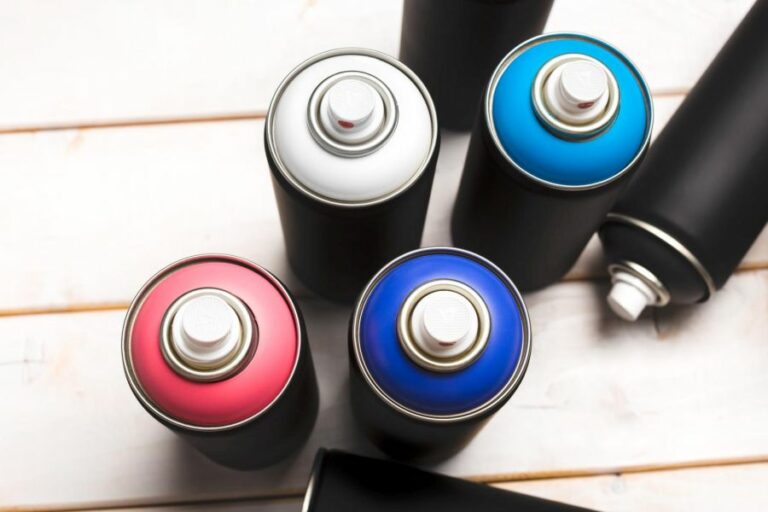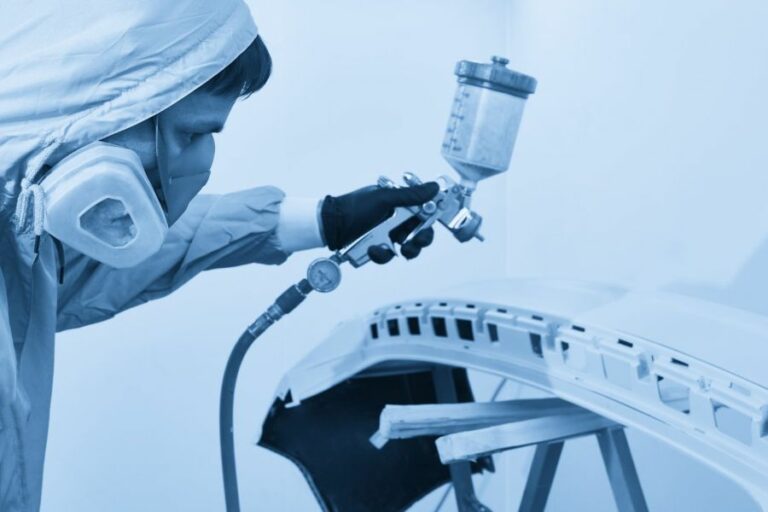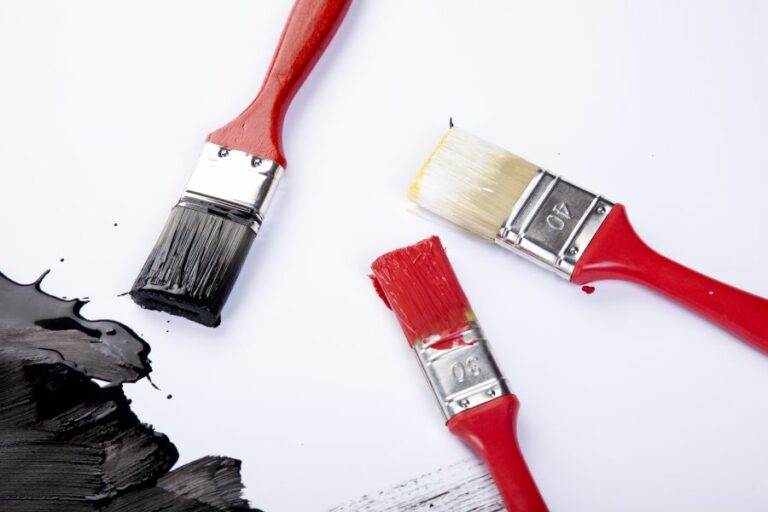Paint For Outdoor Statues
Are your outdoor statues looking dull or worn out? Breathe new life into them with the perfect paint and a few expert tips. I will guide you through selecting the right paint and application techniques to restore and protect your cherished sculptures.
Paint for outdoor statues:
This guide discusses various types of paint suitable for outdoor statues, including acrylic, oil-based, enamel, and masonry paints, each with its benefits and drawbacks. Proper surface preparation, such as inspection, repair, cleaning, and sanding, is essential before painting. Applying primer, using the recommended application technique, and adding a sealant are crucial steps for a successful and long-lasting paint job.

Discover the perfect paint for outdoor statues in our comprehensive guide. Enhance their appearance, durability, and weather resistance with expert tips, trending color schemes, and recommended products. Elevate your garden decor now for a stunningly transformed space.
Contents
- 1 Exterior Paint for Outdoor Sculptures
- 2 What Type of Paint Should Be Utilized for Outdoor Statues?
- 3 Is it Possible to Apply Paint on Outdoor Concrete Statues?
- 4 What is the Process for Painting a Garden Statue?
- 5 What Type of Paint is Suitable for Outdoor Resin Statues?
Exterior Paint for Outdoor Sculptures
Choosing the right paint is crucial if you want to bring new life to your outdoor statues or protect them from the elements.
• Different Types of Paint for Outdoor Statues
Outdoor statues are exposed to various weather conditions, such as sunlight, rain, and temperature fluctuations. Therefore, it is crucial to select paint specifically designed for outdoor use. Here are some popular types of paint you can choose from:
– Acrylic Paint
Acrylic paint is water-based, making it an eco-friendly option for your outdoor statues. It also dries quickly and is resistant to UV radiation. It offers a variety of finishes, such as gloss, matte, and satin.
- Pros: Quick-drying, UV-resistant, a wide range of colors, easy to use
- Cons: May require multiple coats for the best coverage, can be less durable than other options
– Oil-Based Paint
Oil-based paints are more durable than acrylics, providing excellent coverage with fewer coats. They are less prone to fading, chipping, or peeling, making them ideal for outdoor statues.
- Pros: Durable, long-lasting, excellent coverage, a wide range of colors
- Cons: Longer drying time, emits a stronger odor, frequent use requires proper disposal of solvents
– Enamel Paint
Enamel paint is a durable, high-gloss finish that offers exceptional durability and hardness. This type of paint is resistant to rust, making it perfect for metal statues or other surfaces prone to rust.
- Pros: Glossy finish, highly durable, rust-resistant
- Cons: Can be difficult to work with, requires a steady hand, and takes longer to dry
– Masonry Paint
Specifically designed for use on masonry surfaces such as stone, brick, and concrete, masonry paint provides excellent adhesion and durability. It is often water-based and highly resistant to weathering, making it ideal for brick, stone, or concrete outdoor statues.
- Pros: Excellent adhesion, highly durable, compatible with masonry surfaces, weather-resistant
- Cons: Can be expensive, limited color range
• Prepping Outdoor Statues for Painting
Before applying paint to your outdoor statue, it’s essential to take time to prepare the surface properly.
– Inspection and Repair
First, thoroughly inspect the statue for signs of damage or deterioration. Any cracks, chips, or other defects should be repaired with the appropriate filler materials before painting.
– Surface Cleaning
Use a soft brush to remove loose dirt, dust, and debris. If your statue has mold or mildew, use a mildew-resistant cleaner or bleach solution to clean the surface thoroughly. Rinse with water and allow the statue to dry completely before painting.
– Sanding and Removing Old Paint
If your statue has existing paint that is flaking or peeling, you will need to remove the old paint before applying new paint. You can use a combination of scraping tools and sandpaper to remove old paint and roughen the surface, ensuring better paint adhesion.
If you’re repainting a metal statue, using a rust remover and metal primer is essential to prevent future rusting.
• Applying Paint to Outdoor Statues
Now that your statue has been prepped, it’s time to paint. Here are some tips to ensure a successful application:
– Primer
Using a primer specifically designed for your statue’s material is crucial. Primer creates a uniform surface for your paint to adhere to, ensuring a more resilient finish. Allow the primer to dry according to the manufacturer’s instructions before applying your paint.
– Proper Application
When painting your statue, follow the recommended application technique for the type of paint you are using. This may include using brushes, rollers, or spray paint. Apply multiple thin coats instead of one thick coat, allowing adequate drying time between coats as suggested by the manufacturer.
– Sealant
Consider applying a clear sealant or topcoat after your paint has dried for extra protection from the elements. This step can enhance the durability and lifespan of your paint job.
• Regular Maintenance and Care
Maintaining your outdoor statue is just as important as selecting the right paint. To keep your newly painted statue looking its best, clean it regularly and promptly address any signs of damage.
Additionally, applying a new coat of paint every few years can help extend your statue’s life and appearance.
In conclusion, choosing the right paint for your outdoor statue will enhance its appearance and protect it from the elements. Take the time to prepare the surface and follow the recommended application techniques for a successful and long-lasting paint job.
What Type of Paint Should Be Utilized for Outdoor Statues?
Outdoor statues are undoubtedly an essential element when it comes to enhancing the beauty and appeal of a garden, park, or any other outdoor space. They contribute to the overall aesthetic value and give a sense of uniqueness to the area.
However, to ensure that your art remains stunning and stands the test of time, you need to protect it with the right paint.
• Acrylic Based Paints
One of the most popular and commonly used paints for outdoor statues is acrylic-based paint. These water-based paints comprise acrylic polymer emulsion and can be easily applied to various surfaces, including metal, wood, and concrete sculptures. Some of the benefits of using acrylic paints include:
– Quick Drying Time
Acrylic paints dry relatively quickly compared to other paints, usually in just a few hours. This means you can apply multiple coats of paint in a short span of time, ensuring a thorough and long-lasting finish.
– Weather Resistance
Acrylic-based paints are designed to withstand harsh outdoor conditions such as sunlight, rain, and fluctuating temperatures. They form a tough and durable finish that protects the statue from UV rays, water damage, and other environmental factors.
– Easy to Clean
Acrylic paints are water-soluble and can be cleaned up easily with soap and water, making them convenient and hassle-free to work with.
I recommend using high-quality acrylic paint formulated explicitly for outdoor applications, as these are designed to provide maximum protection and durability.
• Oil-Based Paints
Oil-based paints are another excellent choice for outdoor statues. They consist of pigments suspended in a drying oil, usually linseed oil, which forms a hard, protective layer on the surface when cured. Some of the advantages of oil-based paints are:
– Durability
Oil paints are known for their long-lasting and durable finish, making them well-suited for outdoor applications. They are less prone to cracking or chipping than other paints, ensuring your statue remains protected for longer periods.
– Rich Colors and Glossy Finish
Oil-based paints offer a more vibrant color palette and a glossy finish, which can enhance the appearance of your statue and make it a focal point in your outdoor space.
– Versatility
These paints can be used on various surfaces and materials, including wood, metal, and concrete, making them an ideal choice for all types of outdoor statues.
However, one of the downsides of oil-based paints is that they take longer to dry, up to 24 hours or more, so you need to be patient while working on your project. Also, make sure to use a primer before applying oil-based paint to ensure proper adhesion and a long-lasting finish.
• Enamel Paints
Enamel paints, which can be oil- or water-based, are another popular choice for painting outdoor statues. They are well-known for their hard, glossy finish and are incredibly resistant to wear and tear. Some of the advantages of using enamel paints include:
– Long-lasting Finish
Enamel paints form a robust, protective layer on your statue, ensuring that it remains protected from the elements and retains its beautiful appearance for an extended period.
– Easy to Maintain
These paints create a glossy, smooth finish, making them resistant to dirt, stains, and scratches. This means that your statue will require minimal upkeep to keep it looking as good as new.
– Suitable for High-Traffic Areas
Enamel paints are an ideal option if your statue is located in a high-traffic area since they can endure frequent touch and wear without chipping or fading.
When using enamel paints, applying a suitable primer first is essential to ensure the paint adheres correctly and lasts longer.
• Tips for Painting Outdoor Statues
Before you begin painting your statue, there are a few essential tips to keep in mind:
- Preparation: Clean the statue thoroughly by removing dirt, dust, and any loose paint. Patch any cracks or holes and sand the surface for a smooth finish.
- Priming: Use a suitable primer for your statue’s material before applying the paint. This will create a proper base for the paint, ensuring better adhesion and longevity.
- Multiple Coats: Apply at least two coats of paint to create a durable, protective layer on your statue. Be sure to let each coat dry before applying the next one.
- Sealant: After the paint has dried, apply a clear sealant or varnish to protect your statue further and enhance the overall appearance.
In conclusion, acrylic-based paints, oil-based paints, and enamel paints are all excellent choices for painting outdoor statues. Each type has unique advantages, so it’s essential to consider your specific needs, preferences, and the statue’s material while deciding.
With proper preparation, application, and sealing, your outdoor statue will remain protected and maintain its beauty for years to come.
Type of Paint | Description | Benefits |
|---|---|---|
Acrylic Paint | Water-based, quick-drying paint with good adhesion to most surfaces. | Weather resistant, fades less, and easy to clean. |
Exterior Latex Paint | Specifically formulated for outdoor use with a durable, flexible finish. | Resistant to cracking, peeling, and mildew. Can be applied to various materials. |
Oil-Based Paint | Long-lasting paint that dries to a hard, glossy finish. | Excellent durability, strong adhesion, and water resistance. |
Masonry Paint | Designed to withstand harsh weather conditions and protect surfaces. | Waterproof, resistant to mold, and ideal for porous materials like concrete or stone. |
Is it Possible to Apply Paint on Outdoor Concrete Statues?
Yes, you can paint outdoor concrete statues. In fact, it is a perfect way to refresh and personalize these decorative pieces.
• Preparing the Concrete Statue for Painting
Proper preparation is key to a successful painting project. Before you start, make sure that the concrete statue is clean, dry, and free from any loose debris. Here’s a step-by-step guide to getting your statue ready for painting:
– Clean the Statue
- Remove loose dirt and debris using a dry, soft-bristle brush.
- Fill a bucket with warm water and a small amount of mild dish soap.
- Wet a soft cloth or sponge in the soapy water and gently scrub the statue.
- Rinse the statue thoroughly with a garden hose, ensuring all soap residue is gone.
- Allow the statue to dry completely. This may take 24-48 hours, depending on the size and intricacy of the piece.
– Repair Minor Damage
Inspect the statue for any cracks, chips, or other damage. To repair these imperfections:
- Use a stiff-bristle brush to clean and roughen the damaged area.
- Apply a concrete patch or filler, following the manufacturer’s instructions.
- Allow the patch or filler to dry and cure completely.
- Sand the repaired area gently to create a smooth surface for painting.
– Apply a Concrete Primer
A concrete primer, also known as a masonry primer, is essential for ensuring proper paint adhesion and durability:
- Choose an acrylic-based primer that is specifically designed for use on concrete surfaces.
- Apply the primer evenly over the entire statue using a brush or roller.
- Allow the primer to dry according to the manufacturer’s recommendations.
• Choosing the Right Paint and Sealer
The type of paint you use on your outdoor concrete statue will greatly impact the overall appearance and longevity of the piece. Here’s what to consider when selecting paint and sealer:
– Acrylic Paints
I recommend using acrylic paints for outdoor concrete statues, as they provide excellent adhesion, durability, and color retention. These water-based paints are easy to use, dry quickly, and can be cleaned up with soap and water.
Choose a paint that is specifically designed for exterior use and concrete surfaces.
– Paintbrushes and Rollers
High-quality paintbrushes and rollers will give you a smooth, professional-looking finish. I recommend using synthetic bristle brushes and rollers designed for use with acrylic paints.
– Sealer
A clear concrete sealer is essential for protecting your painted concrete statue from the elements and extending its lifespan. Select a sealer that is compatible with acrylic paints and specifically designed for outdoor use.
• Painting Techniques and Tips
Now that your statue is properly prepped and your paint and tools are ready, it’s time to get creative. Here are some techniques and tips to help you achieve a stunning result:
– Base Coat
Apply an even base coat of paint to the entire statue, allowing it to dry completely before moving on to other colors or designs.
– Dry Brushing
For a more textured look, try using the dry brush technique. Dip your brush into the paint and then remove most of the paint by wiping the brush on a paper towel. Lightly brush the paint onto the statue, allowing the underlying color to show through.
– Detail Painting
Use a smaller brush dipped in contrasting colors to paint intricate details or add shading and dimension. Practice on a scrap piece of paper or cardboard first to get the hang of it.
– Multiple Colors
If you’re using multiple colors, apply the lightest color first and work your way up to the darker shades.
– Weathering Techniques
To give your statue an aged or weathered appearance, try using a mixture of water and paint to create a wash. Apply the wash over the dried paint and then use a dry cloth to wipe away excess liquid, leaving the desired effect behind.
• Sealing the Painted Concrete Statue
Once you’re satisfied with your painting, allow the paint to dry completely before applying a coat of clear sealer. Follow the manufacturer’s instructions for proper application and recommended drying and curing times. A well-sealed statue will keep its colors vibrant and remain beautiful for years.
In conclusion, painting outdoor concrete statues can be a rewarding and creative project. With proper preparation, the right materials, and a little artistic flair, you can transform your statue into a personalized work of art that enhances your outdoor space.
| Can you paint outdoor concrete statues? | |
|---|---|
| Answer | Yes, you can paint outdoor concrete statues. The use of an appropriate outdoor primer, paint, and sealer is recommended for proper adhesion and protection of the statue from the elements, ensuring the finish lasts for a long time. |
What is the Process for Painting a Garden Statue?
Garden statues are a wonderful addition to any outdoor space, providing both visual interest and a personal touch. Over time, however, the paint on these statues can fade, chip, or become damaged by the elements.
• Choosing the Right Paint and Materials
Before you begin, choosing the appropriate paint for your garden statue is important. The type of paint you choose should be suitable for outdoor use and adhere well to your statue’s material. Keep the following points in mind when selecting paint:
- Use high-quality, exterior-grade acrylic latex paint or masonry paint for concrete or stone statues.
- For resin or plastic statues, use paint specifically designed for plastics or paint with a built-in primer for better adhesion.
- Choose a paint with rust-preventative qualities for metal statues or use a separate primer designed for metal surfaces.
In addition to the right paint, you’ll also need the following supplies for this project:
- A brush or sponge for cleaning the statue
- A drop cloth or tarp to protect the surrounding area from paint splatters
- Paintbrushes or foam brushes in various sizes
- A clean, damp cloth for wiping away mistakes
- Optional: A clear, exterior-grade sealer to protect the paint and increase its durability
• Preparing the Garden Statue for Painting
Before you begin painting, you’ll need to clean the statue and remove any loose or chipping paint. Follow these steps to prepare your statue for a fresh coat of paint:
- Remove dirt and debris. Using a brush or sponge, gently clean the statue to remove any dirt, dust, or debris. This will help the paint adhere better to the surface.
- Inspect for damage. Check the statue for any cracks, holes, or other damage that may need to be repaired before painting. If you find any such issues, consider using a product like epoxy or an outdoor-grade filler to make the necessary repairs, following the manufacturer’s instructions for use.
- Remove loose paint. If the old paint on the statue is chipping or peeling, use a wire brush or scraper to remove it. Be sure to do this gently to avoid damaging the statue itself.
- Allow the statue to dry. After you have cleaned and repaired the statue, allow it to air dry completely. Depending on the material and humidity levels, this may take several hours or up to a day.
• Painting the Garden Statue
Once your garden statue is clean and dry, you’re ready to begin painting. Follow these steps to give your statue a fresh, new look:
- Protect your work area. Lay down a drop cloth or tarp around the statue to protect the surrounding area from paint splatters.
- Apply a primer, if necessary. If you are painting a metal statue or if your chosen paint requires a primer, apply a thin, even coat of primer to the statue, following the manufacturer’s instructions for dry time.
- Begin painting the base color. Once the primer, if used, is dry, you can begin painting the base color onto the statue. Use a large brush for larger areas and smaller brushes for more detailed work. Apply thin, even coats of paint, allowing each coat to dry before applying the next. Two to three coats of paint will typically be needed for complete coverage.
- Add details and highlights. After the base color is dry, you can add details and highlights to your garden statue. Use a smaller brush or a detail brush for this step. Be patient and allow yourself the time to add these details carefully.
- Correct any mistakes. If you make a mistake or need to clean up any paint lines, use a damp cloth to wipe away the paint before it dries gently.
- Apply a clear sealer, if desired. You can apply a clear, exterior-grade sealer to protect your freshly painted statue and increase its durability. Follow the manufacturer’s instructions for application and dry time.
• Caring for Your Painted Garden Statue
After your garden statue has been repainted and sealed, there are a few simple steps you can take to keep it looking fresh and vibrant for years to come:
- Protect the statue from the elements by positioning it under a tree, a covered patio, or another area shielding it from direct sunlight and harsh weather.
- Clean the statue periodically by gently brushing away dirt and debris with a soft brush or wiping it down with a damp cloth.
- Check the statue regularly for any signs of peeling or chipping paint, and touch up these areas as needed.
In conclusion, repainting a garden statue is a manageable project that can give your outdoor space an updated and refreshed appearance.
By choosing the right paint, preparing the statue properly, and following the painting and sealing steps detailed in this guide, you’ll have a beautifully finished statue that can be enjoyed for years to come. Happy painting!
Step | Description |
|---|---|
1 | Clean the statue: Remove any dirt, dust, or loose debris from the surface of the statue using a soft brush or damp cloth. |
2 | Repair any damage: If there are any cracks or chips, repair them with an appropriate filler or adhesive. |
3 | Apply a primer: Choose a primer suitable for the statue material and apply it evenly, allowing it to dry completely before moving on. |
4 | Choose the paint: Select a high-quality outdoor paint that is suitable for the material of the statue and the desired finish. |
5 | Apply the paint: Using a brush or a sponge, apply the paint to the statue in thin, even coats, allowing each layer to dry before applying another. |
6 | Add details: If you wish to add details, use a smaller brush and carefully paint on the desired decorations. |
7 | Seal the paint: Apply a clear sealer or varnish to protect the paint and ensure the statue’s longevity. |
What Type of Paint is Suitable for Outdoor Resin Statues?
Outdoor resin statues can lend character, charm, and whimsy to your garden. However, finding the appropriate paint to withstand diverse weather conditions while maintaining the statue’s appearance can be challenging.
• Factors to Consider When Choosing Paint
Before we dive into the various types of paint, it’s important to understand the factors that determine the suitability of paint for outdoor resin statues:
- Durability: The paint should be able to withstand harsh weather conditions such as rain, sunlight, and temperature fluctuations.
- UV Resistance: Sunlight tends to fade colors over time. Ensure the paint is resistant to ultraviolet (UV) radiation.
- Compatibility with Resin Material: The paint should adhere well to the statue’s surface and not react negatively with the resin material.
- Ease of Application: The paint should be easy to apply, either with a brush, roller, or spray.
- Clean Up: Consider paints that can be easily cleaned up using water or other household solvents.
• Types of Paint Suitable for Outdoor Resin Statues
– Acrylic Paint
Acrylic paint is water-based, making it suitable for outdoor statues due to its durability and ease of application. It forms a stable bond with resin materials and dries quickly to a hard, resilient finish.
This type of paint is available in a wide range of colors and can be found in most art supplies, craft, and hardware stores.
I recommend using high-quality, outdoor-grade acrylic paint for the best results. Brands like Golden, Liquitex, or DecoArt Patio Paint are ideal for this purpose. Ensure that you apply at least two coats and allow the paint to dry between each coat.
– Exterior Latex Paint
Exterior latex paint, also known as house paint, is another excellent option for painting outdoor resin statues. It is designed to withstand harsh weather conditions and has exceptional UV resistance. Exterior latex paint requires little maintenance and typically keeps its color for many years.
Opt for brands like Sherwin-Williams, Benjamin Moore, or Behr when choosing exterior latex paint. Always select the appropriate primer designed for use on resin or plastic materials.
Usually, one or two coats of paint, depending on the thickness and pigment content, are sufficient to achieve complete coverage.
– Epoxy Paint
Epoxy paint forms a strong, durable, and weather-resistant surface, making it ideal for outdoor resin statues. It is resistant to chipping, peeling, and fading due to sunlight exposure and adheres well to resin materials.
Ensure you choose a marine-grade epoxy paint specifically designed for outdoor applications. Brands like Rust-Oleum and TotalBoat offer excellent choices.
Epoxy paints typically require mixing a resin and hardener in specific proportions, so follow the manufacturer’s instructions carefully while applying the paint.
Epoxy paint’s application can be more complicated than other options, but it does offer outstanding durability and longevity.
• Preparing the Statue for Painting
To achieve a professional and lasting finish, proper surface preparation is crucial. Here are the steps to follow when prepping your outdoor resin statue for painting:
- Clean the Statue: Remove dirt, dust, and grime from the surface using a soft brush, mild detergent, and water. Allow the statue to dry completely before proceeding.
- Prime the Surface: Apply a primer that is compatible with the resin material and the chosen paint to ensure proper adhesion. Allow the primer to dry according to the manufacturer’s instructions.
- Fill Any Cracks or Gaps: If your statue has any cracks or gaps, use an exterior-grade filler to fill them. Allow the filler to dry, and sand it with fine-grit sandpaper to create a smooth surface.
- Sand the Statue: Lightly sand the entire statue using fine-grit sandpaper to ensure maximum adhesion for the paint.
- Clean the Statue Again: Wipe the statue with a damp cloth to remove any dust from the sanding.
• Applying the Paint
Once you have chosen the appropriate paint and prepared the statue, follow these steps for a successful paint job:
- Apply the First Coat: Apply the paint using a brush, roller, or spray according to your chosen paint type. Ensure even and complete coverage.
- Allow the Paint to Dry: Follow the manufacturer’s instructions for drying times between coats.
- Apply Additional Coats: Apply at least one more coat of paint, ensuring ample drying time between coats.
- Seal the Statue: Once the paint is dry, apply a clear, UV-resistant sealant to protect the statue’s surface and prolong the life of the paint.
By following these guidelines and recommendations, you can ensure a stunning finish on your outdoor resin statues that will last for years to come. Whether you opt for acrylic, exterior latex, or epoxy paint, proper preparation and application are key to achieving the desired results. Happy painting!
Paint Type | Description |
|---|---|
Acrylic paint | Acrylic paint is water-based, easy to clean up, and can be used on a variety of surfaces. It dries quickly and is resistant to fading when used on outdoor resin statues. |
Enamel paint | Enamel paint is oil-based, more durable than acrylic paint, and provides a glossy finish. It can be used on outdoor resin statues but might require additional preparation and clean-up. |
Urethane paint | Outdoor spray paint, especially those designed for plastic and resin surfaces, provides a quick and easy application. These paints are often UV-resistant and weather-resistant, making them suitable for outdoor resin statues. |
Outdoor spray paint | Outdoor spray paint, especially those designed for plastic and resin surfaces, provide a quick and easy application. These paints are often UV-resistant and weather-resistant, making them suitable for outdoor resin statues. |







